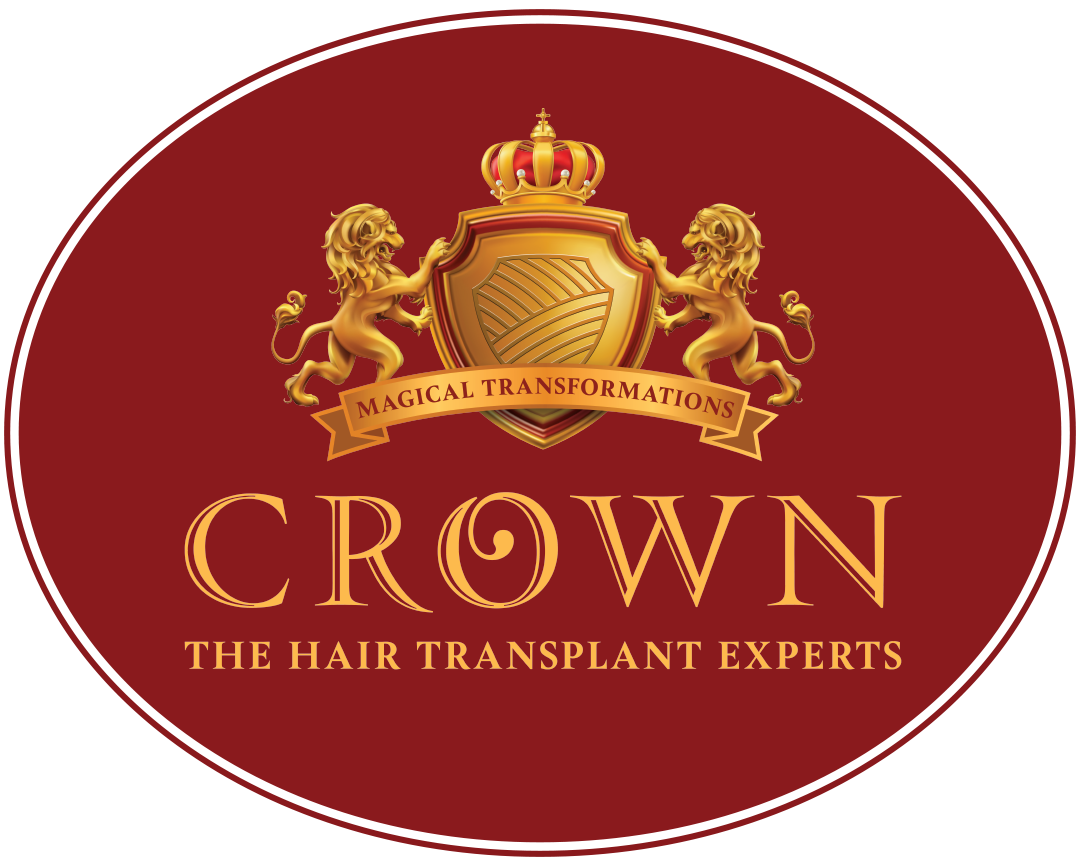A certain amount of hair shedding is normal in both males and females. The American Academy of Dermatology says it is normal to shed an average of 50 to 100 strands of hair daily. Those who lose more than 100 strands daily or in large clumps could be experiencing excessive hair shedding. It is essential to know that Hair shedding is not the same as permanent hair loss. Hair shedding can be a normal part of your natural hair cycle. The hair follicle goes through a cycle of growth and rest. This cycle repeats itself as long as the hair follicle is producing new hair. Gradual thinning of the hair may result in a receding hairline or patterned baldness ( Androgenetic alopecia).
There could be many underlying causes for hair thinning and loss, including heredity, hormonal changes, or a normal part of the ageing process. Though hair loss can happen to anyone, it’s more common in men and is called Male androgenetic alopecia. Studies reveal that India is emerging as a hotspot for all kinds of hair loss problems in the present times. Androgenetic alopecia is the most common form of hair loss in men, affecting 30-50% of men by age 50. It occurs in a pattern, affecting the temples, vertex, and mid-frontal scalp. Although male androgenic alopecia is not a dangerous condition, it is a cause of great anxiety and impacts the self-esteem of an individual.
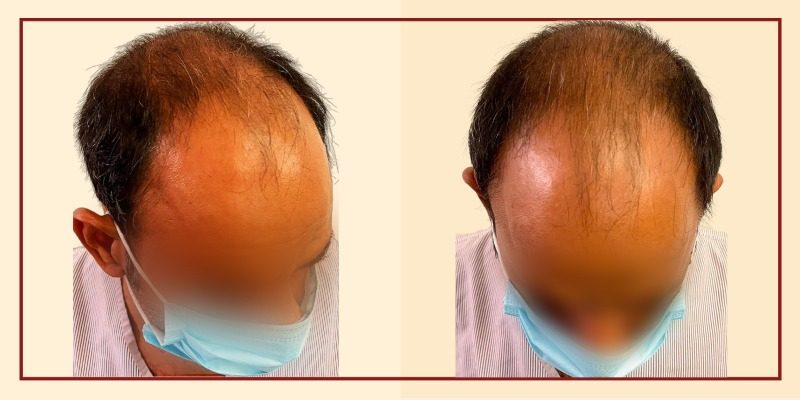
Have you noticed your hairline starting to recede? Have you spotted an area of scalp visible, progressing over months to years? Have you detected hair thinning around your crown area? These could be signs that you are suffering from male pattern baldness.
Male pattern baldness shows up in a tell-tale shape- a receding hairline with thinning strands around the crown of your head. The hairline gradually recedes and forms an “M” shape. Hair around the crown of the head often thins over time. Gradually, the hairs become shorter and thinner, creating an U-shaped or horshoe pattern of hair above your ear, wrapping around to the lower back of your head and a bald area behind your head. Men with this trait can lose their locks as early as their teens. Studies show that the sooner it starts, the greater the loss.
Diffuse thinning is yet another symptom of male pattern baldness. It affects the entire scalp, thinning the hair without any visible effects on the hairline. This symptom is easily noticeable when the hair is wet or in bright light, making the scalp more visible.
At an early age, baldness in men has become a genuine epidemic in recent times. Although we tend to associate hair loss with middle age, research shows that approximately 16% of men between 18 and 29 years of age are currently affected by hair loss. Studies by the International Society for Hair Restoration Surgeons (ISHRS) and the Association of Hair Restoration Surgeons of India (AHRS India) have found that millennial men are inching towards baldness as early as their 20s. Signs of male pattern baldness such as a receding hairline or diffuse thinning have become common in men in their early 20s.
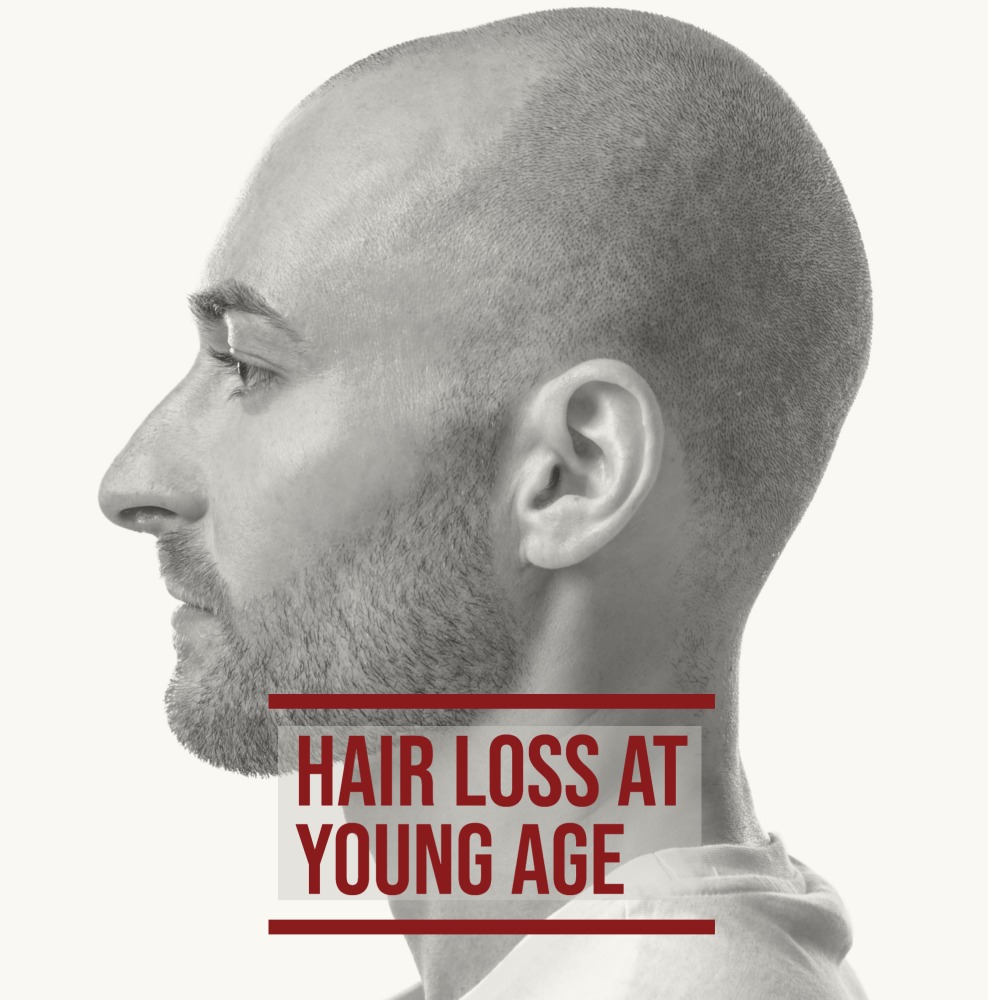
Early hair loss seems inevitable in people who work for longer hours, night shifts with changes in circadian rhythms without proper nutrition, high-stress levels, pollution, and chemicals in food and water. The time frame has also shifted and begun much earlier for most patients. For example, if a man started balding at the age of 40, now, his son starts thinning or balding at 16 -25.
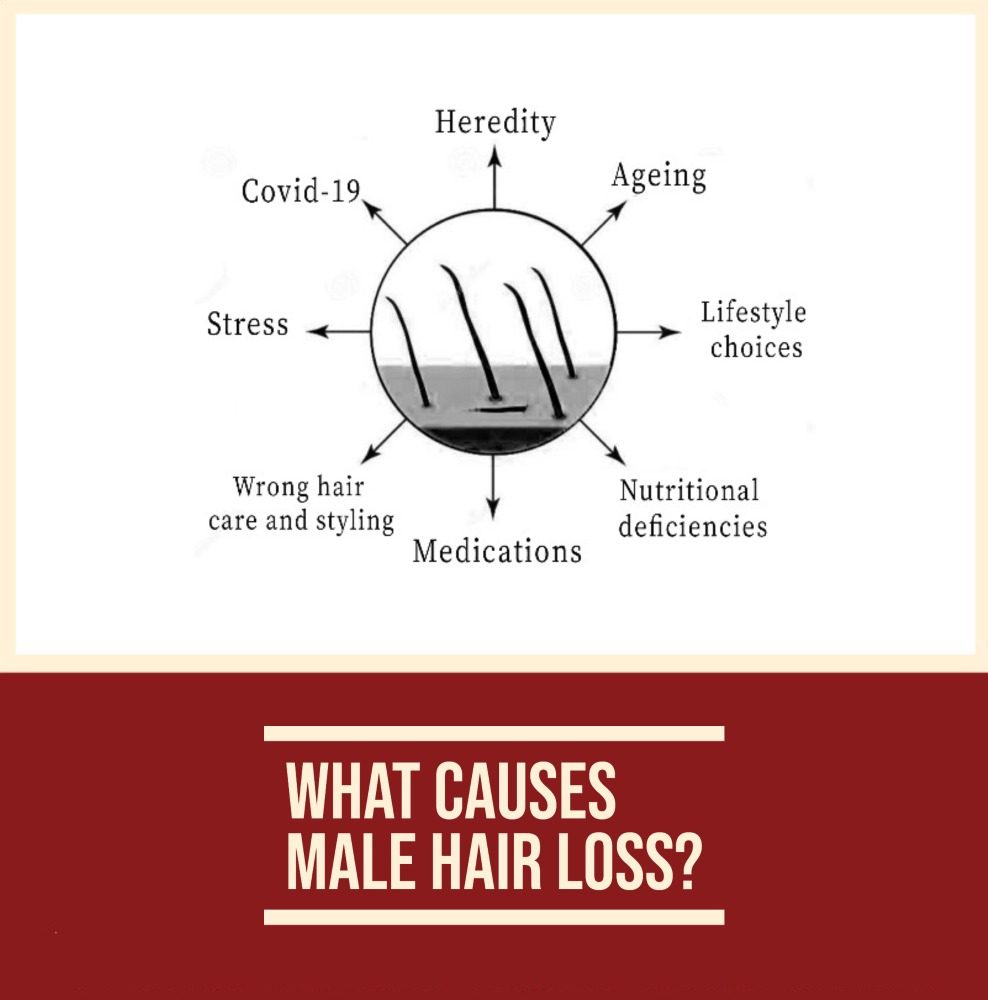
First and foremost, knowing what causes hair loss is essential, as this will allow us to follow healthier habits and lifestyle changes. It is equally important to see if it is hair shedding or hair loss! Hair loss is usually due to the complex play of three significant factors- hormones, heredity, and age. Apart from these, other minor factors could lead to hair loss and hair shedding.
This is the most common and leading cause of androgenetic alopecia or male pattern baldness. It implies that one has inherited the genes that cause the hair follicles to shrink and eventually stop growing. This shrinking could start as early as in the teens or later in life. The very first sign is often a receding hairline or thinning of hair around the crown area. Studies show that Male pattern baldness is passed from paternal or maternal genes to a child.
Scope for regrowth – Choosing the appropriate treatment at the right time can slow down the process of hair loss. Regrowth is only possible by reversing the thinning of hair. Areas that lost the hair cannot be reverted back without hair transplant surgery.
The research concludes that the carbon monoxide and nicotine we inhale during smoking contain the blood from transporting oxygen and nutrients to hair follicles. In addition, nicotine narrows the blood vessels, further slowing new hair growth. Heavy drinkers are at risk too. Alcohol is known to dehydrate the body, stop iron absorption, and cause brittle hair. Booze also leaves you dry, stops your body from assimilating essential nutrients, and can damage your hair. Since hair is about 25 percent water, drinking too much booze will inevitably make it fall out.
Nutritional deficiencies are one of the main aggravating factors causing thinning of hair in men in their 20s. Hair loss can occur due to malnutrition, particularly if diet contains insufficient amounts of iron, calcium, zinc, protein, folic acid, and fiber. In addition, poor blood circulation may lead to low levels of these nutrients reaching the scalp, resulting in thinning hair. A balanced diet rich in iron, protein, beta-carotene, vitamin C, potassium, copper, selenium, riboflavin, niacin, magnesium, and fiber is crucial to achieving strong, shiny hair.
Scope for regrowth– Healthy Lifestyle modifications can help in regrowth. Adding certain foods to the diet or taking nutritional supplements can foster regrowth. Hair loss due to these reasons is usually temporary if intervened at the right time.
With ageing, the process of hair growth slows down. At one point, hair follicles stop growing, which leads to thinning of the hair on the scalp.
Scope for regrowth – If Caught early, regrowth is possible with the right treatment.
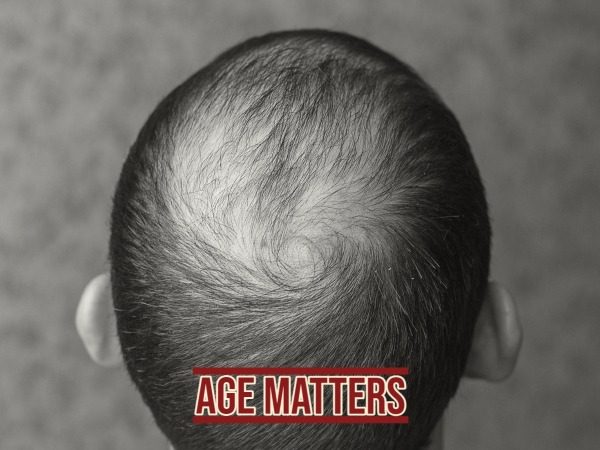
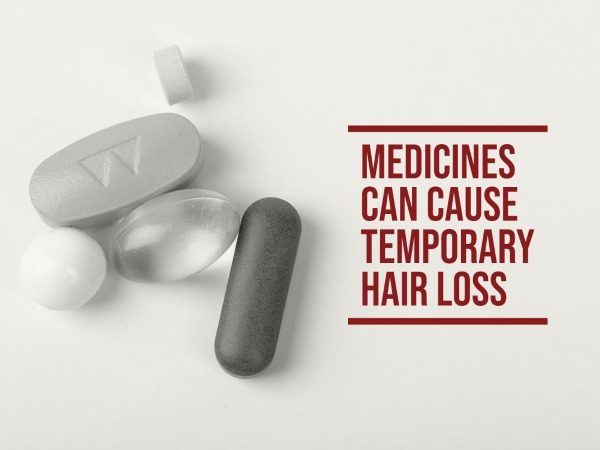
Certain drugs we take for conditions such as cancer, arthritis, depression, heart problems, gout, and high blood pressure can lead to temporary hair loss. In addition, when a person goes through radiation therapy or chemotherapy to the head/neck, hair may not grow back at the same rate as before.
Scope for regrowth –Usually, the condition is temporary, and hair grows back once the drugs are stopped. However, at times, treatments are required to foster regrowth.

Hot-oil hair treatments, frequent colouring, perming, and other hair styling procedures may lead to hair damage and in the long run, could lead to hair loss.
Scope for regrowth – Once the hair follicle is damaged due to extensive cosmetic procedures, hair thinning happens and leads to permanent bald spots.
The American Academy of Dermatology Association has found that hair shedding may be an aftereffect of Covid-19. However, it is attributed more to the stress and anxiety related to the pandemic.
Scope for regrowth – Hair tends to return to normal regrowth on its own or may need therapy and medications, though it might take anywhere between six to nine months.


Stress is one of the leading causes of male hair loss. A hair follicle requires energy to grow, and the scalp’s ability to produce that is boosted by the coenzyme Q10 found in whole grains, meat, and fish. When a person goes through regular stress, this antioxidant is harmed, and the energy required for follicle growth is impacted. Unfortunately, stress has become a silent killer in many ways in today’s fast-moving world.
Scope for regrowth – Stress leads to various conditions of hair loss. Regrowth is usually possible. If hair fails to grow back on its own, treatment may help stimulate regrowth.
The classic symptoms of hair shedding due to stress are finding lots of stray hair in the shower drain, extra hair on the pillowcase than usual, and thinner hair that is visible more if wet or under bright light. While seeing strands of hair fall out in clumps can be very stressful, it’s important to try to de-stress since the excessive hair shedding would stop only when the stress levels are under control. Stress can trigger three kinds of hair loss:
Stress can worsen a form of temporary hair loss called Telogen effluvium, which is different from androgenetic alopecia. It is a form of temporary hair loss that occurs when one goes through shocking events or changes to the body. It could be severe psychological stress, physical trauma, such as injuries from an accident, post-surgical trauma, or intake of anticoagulant and antihypertensive drugs. In this condition, thinning of hair may not occur all over the head. It’s often seen in patches, especially toward the center of the scalp. People affected by this condition do not lose all of their scalp hair. Telogen Effluvium leads to hair loss by interrupting the natural hair growth cycle.
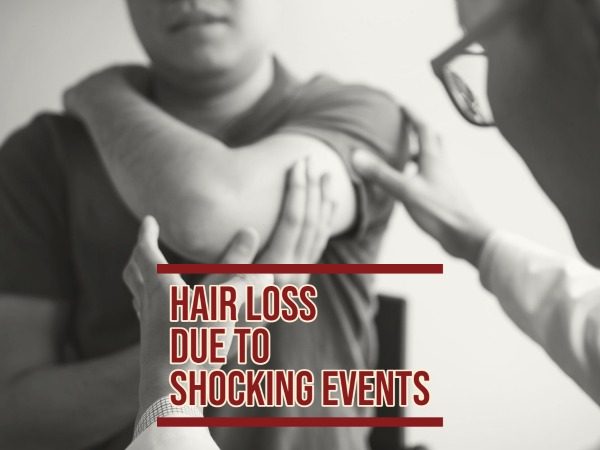

This condition refers to a compulsion to pluck out hairs from certain parts of the body. Pulling out one’s own hair is not uncommon among people in stressful situations. It is an impulse control disorder. People having this condition feel tense before pulling hair or when trying to resist the urge to pull hair. They feel relieved, satisfied, or pleased after acting on the impulse to pull hair. This condition leads to considerable hair loss, and Bare patches would be seen where the hair has been pulled out.
A variety of factors can cause this autoimmune alopecia including severe stress. It is known to be an autoimmune disorder when, the body’s immune system attacks the hair follicles — causing hair loss. This hair loss can occur anywhere in the body including the scalp, body hair, eyelashes, or eyebrows.
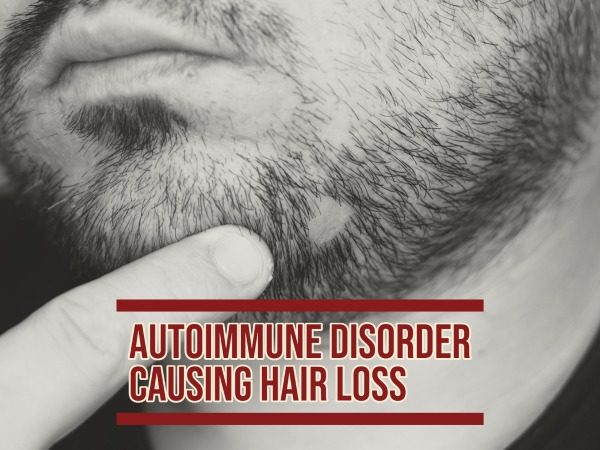
As the old saying goes, prevention is any day better than cure! In some cases, it may be possible to slow down or prevent hair loss. Complete recovery often occurs after several months to a year if the hair loss is due to stress. Though this will largely depend on the underlying cause. Some of the best prevention measures include:
However, it is essential to know that all types of hair loss cannot be slowed down or prevented. In these cases, men opt to combat hair loss through their treatment. Various treatment options are available for hair loss and it is imperative to choose the right treatment based on the underlying cause. Without an accurate diagnosis, treatment is often ineffective.
Some common treatment strategies available are:

Glo PRP ( Platelet rich plasma) equipment is used at CROWN to perform high concentration PRP procedures with a semi anaerobic kit system. With this , there are no chances of contamination of the blood at any step .PRP is not a USA FDA approved treatment for hair loss but adequate scientific literature and evidence is available which supports it helping many patients. PRP is not recommended at Crown as an alternate to hair transplant or medical treatments. It is an adjunct treatment adding benefits of reversing hair thinning in many patients .
Folligro ( Non invasive mesotherapy ) is performed at Crown with an electoporation machine instilling vitamins and minerals directly into the scalp with phenomenon of Iontophoresis. There are no injections or derma roller needles, hence no pain .It just feels like a head massage session with all the benefits of mesotherapy .
